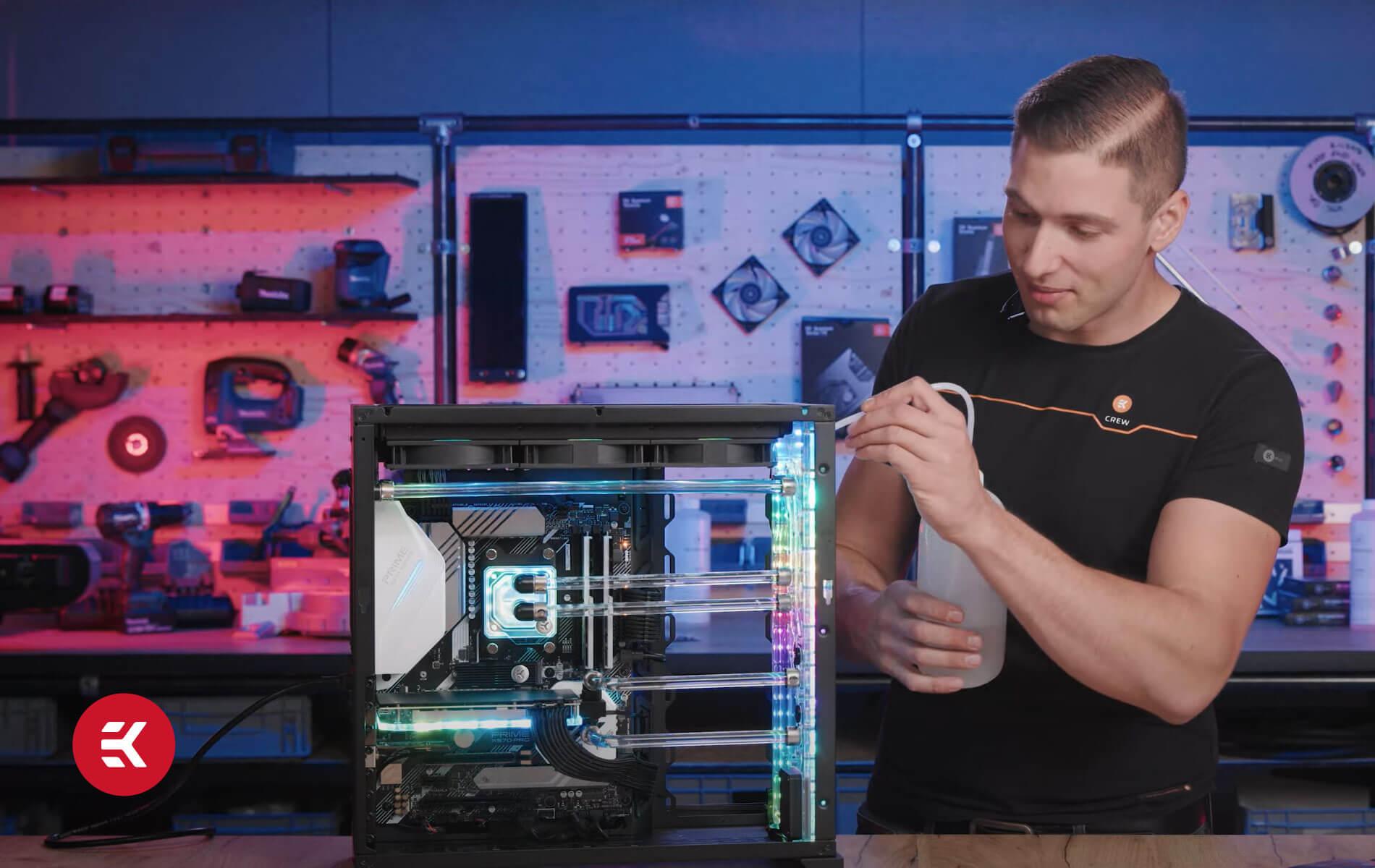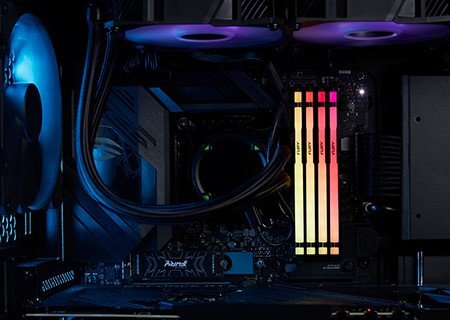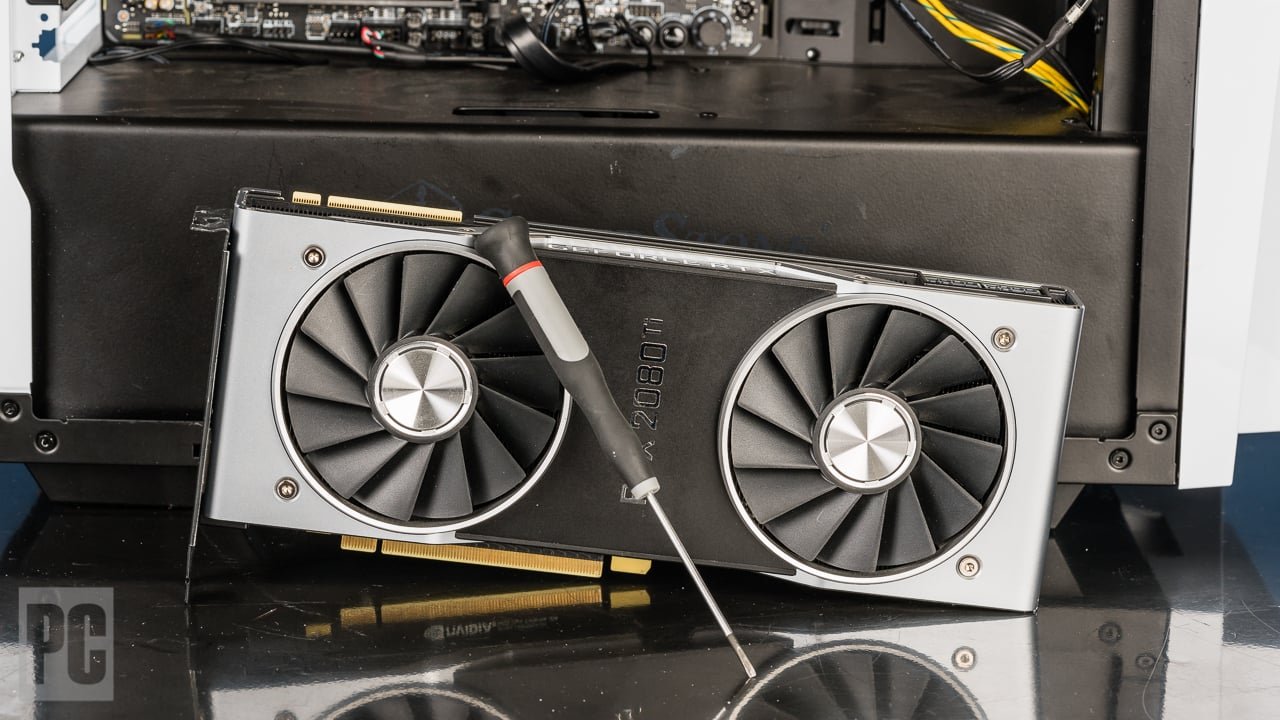CPU liquid cooling is an efficient method for managing the heat output of computer processors. It involves circulating a liquid coolant through a loop that dissipates heat away from the CPU.
In the realm of computer hardware, maintaining optimal CPU temperatures is crucial for performance and longevity. Liquid cooling offers a solution that surpasses traditional air cooling methods in efficiency and thermal management. By exploiting the superior heat transfer capabilities of liquids, this system carries heat from the CPU to a radiator, where it is then released into the environment.
Enthusiasts and professionals favor liquid cooling for its ability to handle intense workloads and overclocking scenarios. Its popularity has grown with the increasing thermal demands of modern CPUs, providing a quieter and more reliable alternative to air coolers. With kits and components available for a range of budgets and expertise levels, liquid cooling has become accessible for a broad user base seeking to optimize their computer’s performance and aesthetics.
The Essentials Of Cpu Liquid Cooling
Imagine a computer that runs smoothly, no matter how tough the task. Liquid cooling makes this possible for the CPU, the brain of the computer. It keeps the CPU cool, pushing it to perform better. Heat can slow down a computer, or even damage it. Liquid cooling is like a special drink for the CPU to stay chill and work hard.
Comparing Air And Liquid Cooling
Is liquid cooling better than air? Let’s explore. CPUs get hot, just like us when we exercise. They need cooling to stay healthy. Air and liquid are like two different fans at a sports game, both encouraging the player, but in their own way.
| Air Cooling | Liquid Cooling |
|---|---|
| Uses a big fan | Uses water or special liquid |
| Good for normal use | Great for gaming or heavy work |
| Easy to set up | Needs some extra steps |
| Less expensive | Costs a bit more |
How Liquid Cooling Systems Work
Ever seen water moving through a garden hose? Liquid cooling is similar. It moves liquid over the CPU to pick up heat. The warm liquid goes to a radiator that cools it down. Then, it’s ready to go back and grab more heat. Here’s a simple list:
- Pump: Sends liquid to the CPU
- Heat-sink: Liquid grabs heat from the CPU
- Radiator: Liquid gives up heat to the air
- Fans: Help air move through the radiator
- Tubes: Carry liquid back and forth
This cycle keeps repeating. Think of it like a water wheel, constantly turning, keeping the CPU at just the right temperature to do its best work.
Advantages Of Liquid Cooling Your Cpu
Liquid cooling is a game-changer for CPU performance. It keeps your system cool, runs quietly, and looks great. Here are key benefits to consider.
Superior Temperature Management
Liquid cooling excels in keeping your CPU cool, even under heavy load. Here’s why it’s better:
- Efficient heat transfer: Liquid moves heat away faster than air.
- Keeps overclocking safe: More headroom to boost CPU speed without overheating.
- Consistent performance: Prevents thermal throttling, enhancing reliability.
Noise Reduction
Fans in air-cooled systems can be loud. Liquid cooling is different:
- Less fan reliance: Radiators in liquid cooling require fewer spins.
- Silent operation: Liquid loops are whisper-quiet, great for sound-sensitive setups.
- Peaceful environment: Enjoy gaming or work without a loud PC.
Aesthetics And Customization
Liquid cooling looks stunning and lets you personalize your setup:
- Clear tubing: Show off coolant colors.
- RGB lighting: Illuminate components for a dazzling display.
- Unique designs: Choose layouts that suit your taste and case.
Selecting The Right Liquid Cooling System
When building a powerful PC, a good liquid cooling system keeps things running smoothly. Choosing the right one is key. This requires understanding different types and what works best with your setup. Let’s dive into the essentials for selecting the right liquid cooling solution for your computer.
Closed-loop Vs. Open-loop Solutions
Closed-loop systems are sealed and maintenance-free. They are easy to install. Open-loop systems, on the other hand, need a custom setup. They offer better cooling but require more work.
| Closed-Loop | Open-Loop |
|---|---|
| Pre-filled, no refills needed | Customizable with coolant choice |
| Easy to install | Better performance |
| Longer lifespan without maintenance | Regular maintenance needed |
Compatibility With Pc Components
Check compatibility before purchasing. CPU socket type and radiator size matter. Ensure the system fits inside your case. Also, consider RAM clearance and graphic card space.
- Match CPU socket type
- Confirm radiator dimensions
- Verify case compatibility
- Check clearance for RAM and GPU
Maintenance Considerations
Closed-loop coolers are low maintenance. Open-loop coolers need regular check-ups. Look for leaks, coolant levels, and dust build-up. Proper care extends the life of your system.
- Inspect for leaks periodically.
- Top up coolant as needed for open loops.
- Clean radiators to prevent dust clogs.

Credit: www.ekfluidgaming.com
Installation Tips For Liquid Cooling
Delving into the realm of liquid cooling reveals a thrilling upgrade for your CPU. It offers the promise of enhanced performance and astounding aesthetics. Yet, successful installation is key.
An essential first step is preparing your PC for the new cooling system. Begin with these actions:
- Turn off your computer and disconnect all cables.
- Open the case to reach internal components easily.
- Ensure you have a clean, static-free workspace.
- Remove existing cooling components carefully.
Follow the installation process for a secure fit:
- Check the compatibility of the cooler with your CPU and case.
- Attach the mounting bracket onto the motherboard.
- Apply thermal paste on the CPU evenly.
- Position the cooling block over the CPU and secure it.
- Mount the radiator and fans inside the case.
- Connect all necessary cables, including power and fan headers.
Safety checks ensure security and longevity. Keep these points in mind:
- Inspect all fittings for leak potential; ensure they are tight.
- Use only the recommended amount of thermal paste.
- Avoid overtightening screws; it can damage components.
- Double-check connections to avoid short circuits.
- Run a leak test before powering on the computer.
Long-term Benefits And Potential Drawbacks
The quest for a cool-running, efficient PC often leads enthusiasts to consider liquid cooling. Unlike standard air cooling, liquid solutions can whisk away heat more effectively, promising quieter operation and higher clock speeds. Yet, before diving into this cooling adventure, it’s crucial to understand both the shining upsides and the possible hiccups of this technology.
Enhancing Pc Performance And Lifespan
Liquid cooling systems take performance to the next level. They excel in heat dispatch from critical components, pushing PCs to run faster and more stable, even under heavy loads. This efficiency not only leads to better performance but also to increased component lifespan, as excess heat often shortens the life of electronic parts. With lower temperatures, each piece of hardware can operate within its intended thermal range, ensuring a robust and long-running system.
Weighing The Cost Against Performance Gains
- Initial Investment: Liquid cooling requires a higher upfront expense when compared to traditional air cooling.
- Energy Efficiency: Liquid-cooled systems may use more electricity, potentially affecting energy bills.
- Performance Boost: The system can handle more intense tasks, be quieter, and achieve faster processing speeds, providing a clear performance advantage.
It’s essential to balance the cost with the expected benefits. The boost in performance could be worth the investment, especially for high-stake tasks or gaming.
Understanding The Risks Of Liquid Cooling
| Potential Risk | Detail |
|---|---|
| Leakage | Though rare, a leak can damage components or cause electrical hazards. |
| Maintenance | Requires regular checkups to ensure the system runs properly and safely. |
| Complexity | Setting up a liquid cooling system can be more complex than traditional air options. |
Being mindful of these risks helps in creating a safe and effective cooling strategy. Regular maintenance plays a pivotal role in preventing issues and ensuring the cooling system’s longevity.

Credit: www.amazon.com
Advanced Liquid Cooling Techniques
When gaming or crunching demanding tasks, a CPU’s temperature can soar. Advanced liquid cooling techniques keep these high-octane chips cool and efficient.
Custom Loop Configurations
Bespoke coolness radiates from custom loop configurations. They offer tailored thermal management for every component. Unique fittings, reservoirs, and tubing combine for a cooling circuit that matches both performance needs and aesthetic preferences.
- Individual component cooling – Each part gets direct cooling.
- Expandable systems – Grow the setup with the machine.
- Visual flair – LED lighting and colored coolants boost style.
Incorporating Additional Cooling Components
For a chill like no other, adding cooling components can be a game-changer. Think beyond the CPU and equip every heat-producing asset with a liquid cooling solution.
Radiators, fans, and cooling blocks work in harmony, dispatching heat with quiet grace. Consistent temperatures mean smoother operation, even during intense gaming or content creation.
Pushing The Limits: Overclocking With Liquid Cooling
Overclock and maintain grace under pressure. With liquid cooling, speed-pushers get performance without the heat penalty. Extra MHz no longer means extra degrees.
Stability in extremes reflects the proficiency of a liquid cooling setup. Enhancements like thicker tubes and faster pumps handle the extra thermal load.

Credit: www.amazon.com
Frequently Asked Questions On Cpu Liquid Cooling
What Is Cpu Liquid Cooling?
CPU liquid cooling is a method of heat dissipation. It uses a water block, radiator, pump, and fluid to transfer heat away from the CPU. This setup is generally more efficient than air cooling. It allows for better thermal management in high-performance computers.
How Does Liquid Cooling Improve Cpu Performance?
By efficiently managing heat, liquid cooling maintains lower CPU temperatures. This prevents thermal throttling and allows for higher, stable overclocking. As a result, it enhances the CPU’s performance, reliability, and longevity compared to traditional air cooling.
Can Liquid Cooling Leak And Damage The Pc?
While leaks are rare in well-manufactured solutions, they can happen. To minimize risk, it’s crucial to use high-quality components and maintain the system properly. Leak-proof designs and warranties can also add peace of mind against potential damage.
Is Liquid Cooling Worth The Expense?
Liquid cooling is worth it for enthusiasts and those with high-performance rigs that generate a lot of heat. While more expensive than air cooling, the investment translates to improved thermal performance and potentially quieter operation.
Conclusion
Navigating the realm of CPU liquid cooling can significantly enhance your system’s performance and longevity. Embrace the tranquility and efficiency that a well-chosen liquid cooler offers. Remember: optimal temperatures are crucial for peak processing power. Ready to elevate your setup?
Dive into liquid cooling and experience the difference firsthand.



